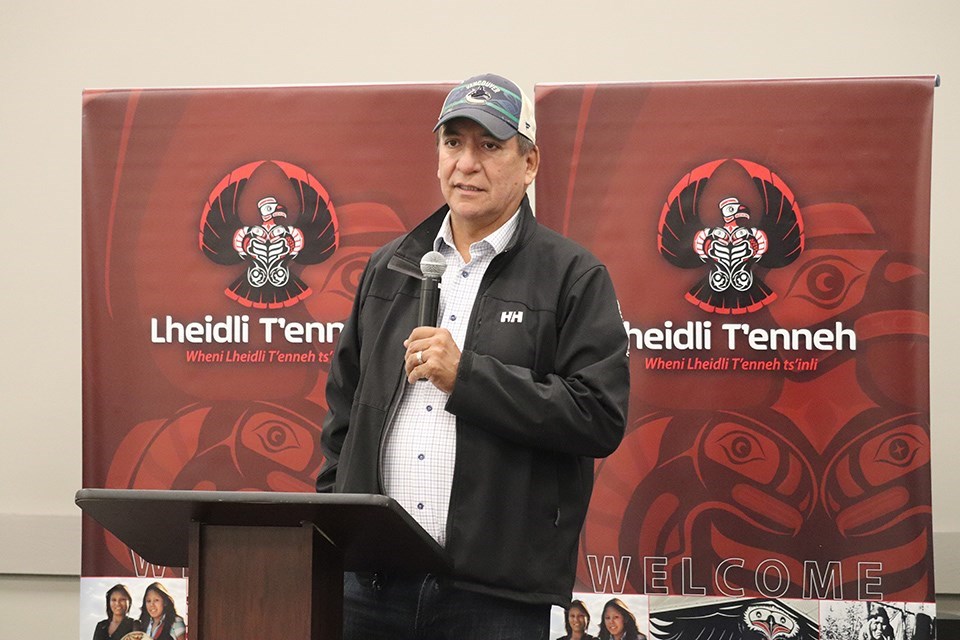A formal agreement has been reached between the province and the McLeod Lake Indian Band to build a net-zero emission hydrogen plant on the Kerry Lake Indian Reserve, 90 kilometres north of Prince George.
The memorandum of understanding announced Wednesday in Victoria lays the groundwork for Mitsubishi Power to create the Tse’khene energy hub, a $7 billion project to produce low-carbon energy, create jobs and advance Indigenous economic reconciliation.
“When fully developed (the energy hub) will be one of the largest Indigenous energy projects in the country,” said Premier David Eby. “It has the potential to generate significant green hydrogen to decarbonize industry in British Columbia.”
Construction of the hydrogen production facility and a straddle plant to extract high-value natural gas liquids is expected to begin in May 2024 with an expected completion date in 2026.
The project is expected to create 500 permanent jobs and a temporary workforce of as many as 2,000 workers during construction.
“It’s a newer way of doing business in the equity world,” said Harley Chingee, chief of the McLeod Lake Indian Band. “Whereas we’re going to include all British Columbians, not just McLeod Lake Indian Band. There will be opportunities for all British Columbians, be they contractors, be they employees, needed to put this giant plant together.”
A temporary work camp, as well as permanent housing, will be needed.
“I think there will be a little city there, for which I’ll be the honorary mayor,” quipped Chingee.
The plant would produce "green hydrogen," generated from non-fossil fuel sources (electricity) and ‘blue hydrogen’ made using natural gas.
Electricity and the process of hydrolysis will be used to split water molecules into their basic elements – two parts hydrogen and one part oxygen. Hydrogen is world’s lightest element and cannot be economically transported by pipeline. The solution is to convert it to liquid ammonia and ship it on an existing rail line near the proposed plant to the expanded port facility in Prince Rupert for export to Asian markets.
The $2 billion straddle plant would utilize by-products of natural gas distribution such as ethene that would otherwise be burnt.
“The MOU is a significant milestone on the development of the Tse’khene energy transition hub, it will provide clarity and certainty on regulatory assessment processes and it’s an example of what true collaboration can look like on major energy projects,” said Josie Osborne, Minister of Energy, Mines and Low-Carbon Innovation.
“The hydrogen economy is a key part of our Clean BC plan, it’s critical to reducing emissions in a sector that is hard to decarbonize.”
The proposed location of the project is two kilometres from a BC Hydro transmission line and water needed for the plant would be drawn from the Crooked River. It’s also close to the Coastal GasLink LNG pipeline, which will be used to feed the straddle plant.
The McLeod Lake band is working with Pacific Natural Gas to reactivate its compressor station near Summit Lake and with Pembina Pipeline Corporation to create the pipeline needed for the project.
Osborne also announced the province opened a Clean Energy and Major Projects office last month to help investors and stakeholders navigate the regulatory process.



